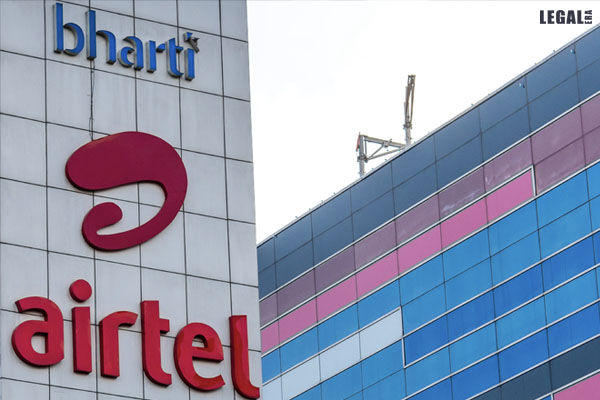
Bharti Airtel Wins CENVAT Credit Appeal for Telecom Infrastructure in Landmark Decision
CESTAT ruling affirms telecom operators’ right to CENVAT credit on towers and shelters
The Customs, Excise, and Service Tax Appellate Tribunal recently ruled in favour of Bharti Airtel, a leading telecom operator, in a significant case regarding the entitlement to CENVAT credit on towers and prefabricated shelters used in the provision of telecommunication services. The ruling reaffirms the right of telecom operators to claim CENVAT credit on these infrastructure components, affirming their status as capital goods or inputs under the CENVAT Credit Rules, 2004.
Background: The Dispute
Bharti Airtel, a prominent player in the telecommunications industry, provides both active and passive infrastructure for its services. Active infrastructure includes essential equipment such as Base Station Controllers and antennas, while passive infrastructure primarily comprises towers and prefabricated shelters. The dispute arose when the tax department questioned Bharti Airtel’s eligibility to avail CENVAT credit on these passive components, arguing that towers and shelters qualify as immovable property and, as such, are not eligible for credit under the CENVAT rules.
The department issued multiple show cause notices covering the period from October 2003 to March 2009, asserting that these passive infrastructure components did not qualify as “capital goods” or “inputs.” Consequently, the department sought to recover the alleged dues along with interest and imposed equal penalties on the telecom operator. Aggrieved by this, Bharti Airtel challenged the demand before the Chandigarh Bench of CESTAT.
Appellant’s Argument
Bharti Airtel’s legal team emphasized that the issue in question had already been settled by the Supreme Court of India in a similar case involving the company itself. The Supreme Court had previously ruled that towers and shelters are accessories to essential telecommunication equipment like antennas and Base Transceiver Stations. As such, they should qualify as capital goods or inputs under the CENVAT Credit Rules.
Further, the appellant’s counsel pointed out that several judgments from high courts and tribunals supported the entitlement to CENVAT credit on infrastructure such as towers and shelters. The counsel also argued that the matter was interpretational in nature, and as such, interest and penalties should not be applicable in this case.
Revenue’s Counterarguments
The revenue counsel maintained that towers and shelters are immovable property and, therefore, do not fall within the scope of “goods” as defined under the CENVAT rules. They contended that since these items are not movable, they cannot be classified as eligible capital goods or inputs for the purpose of availing CENVAT credit.
CESTAT’s Findings
The two-member bench of CESTAT, consisting of S. S. Garg, Judicial Member and P. Anjani Kumar, Technical Member, thoroughly examined the issue in light of the Supreme Court’s ruling in the appellant’s case. The tribunal concluded that the matter had already been resolved by the Supreme Court, which had ruled that towers and prefabricated shelters are indispensable to the functioning of telecommunication services and qualify as capital goods and inputs under the CENVAT Credit Rules.
The tribunal also emphasized that towers and shelters are used directly in the provision of mobile telecommunication services. They are essential components of the telecommunication network, and without them, services like cellular mobile and wireless telephony would not be possible.
In light of the Supreme Court’s decision, the tribunal found that the department’s demand for CENVAT credit on these items could not be sustained. Consequently, the tribunal allowed all four appeals filed by Bharti Airtel, granting them full relief by setting aside the demands, along with the interest and penalties levied by the revenue authorities.
Implications of the Ruling
This ruling has significant implications for telecom operators across India. It reaffirms the entitlement of telecom service providers to avail CENVAT credit on towers, shelters, and similar passive infrastructure, which are crucial for providing telecommunication services. It also emphasizes the importance of interpreting tax rules in a manner that aligns with their practical utility in the telecom sector, rather than adopting a rigid, legalistic approach.
Additionally, the ruling provides clarity on the eligibility of immovable property for CENVAT credit, resolving potential ambiguities and offering a precedent for future cases involving telecom infrastructure.
For the revenue department, this decision highlights the need for a holistic understanding of the telecom sector’s infrastructure, where components like towers and shelters are fundamental to service delivery. It also serves as a reminder that once a matter has been settled by the Supreme Court, it should not be reopened unless there are substantial grounds for revisiting the interpretation of the law.
The CESTAT’s ruling in favour of Bharti Airtel reinforces the principle that telecom infrastructure like towers and prefabricated shelters qualifies as capital goods or inputs under the CENVAT Credit Rules. This decision not only resolves the current dispute but also sets a precedent for similar cases in the future, providing much-needed clarity for the telecom industry. The tribunal’s decision to dismiss the department’s demands for dues, interest, and penalties underscores the importance of aligning tax policy with the evolving needs of India’s dynamic telecom sector.